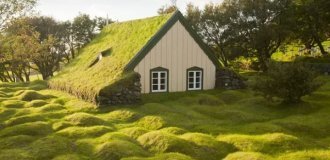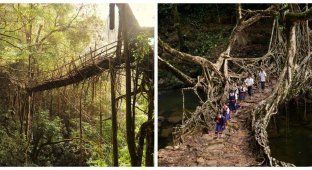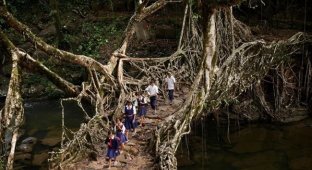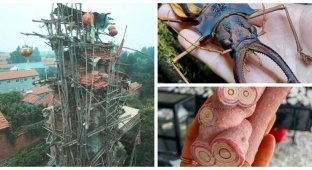It's hard to believe, but this bridge is a living creature 
In the Strugatskys' story "The Return". It (among other things) told about the meeting of people with an alien civilization that did not follow the technological path, but the biotechnological path, creating a paradise on a separate planet.
Even the advanced earthlings of the 22nd century, who were quite skilled in agriculture, were amazed by the harmony with nature that our extraterrestrial brothers in intelligence had achieved. However, we have such an example now on Earth.
There is a small state of Meghalaya in the northeast of India. There, on the Shilong plateau, live two peoples - the Khasi and the Jaintia, who know how to make living bridges, which are amazing examples of bioarchitecture.
The bridges are complex structures formed by the intertwined roots of the rubber plant (Ficus elastica), the same one that often decorates our apartments and houses.
In nature, this is a huge tree that can gain a foothold on rocky slopes by braiding boulders with powerful roots. The rapid growth of the roots and their strength were noticed by local residents, who began to build bridges with their help.
In this case, they use various techniques to help young external roots reach the opposite bank. To do this, they are placed in bamboo gutters that are thrown across the river. Another way is to throw a trunk of a quickly rotting palm tree across the river. The roots crawl along it, simultaneously growing into it as a substrate.
On average, it takes about fifteen years to grow such a bridge, until the roots move to the other bank and gain a foothold there. The resulting bridge can last several hundred years, while the tree is alive. But it requires care: trimming off excess root shoots and dead parts.
It is not known exactly when this tradition appeared. The first such bridges were encountered by Europeans only in the 19th century, and some bridges are already over two hundred years old. In total, there are currently seventy-five such amazing bridges of various sizes and designs in Meghalaya. 


Add your comment
You might be interested in:


























